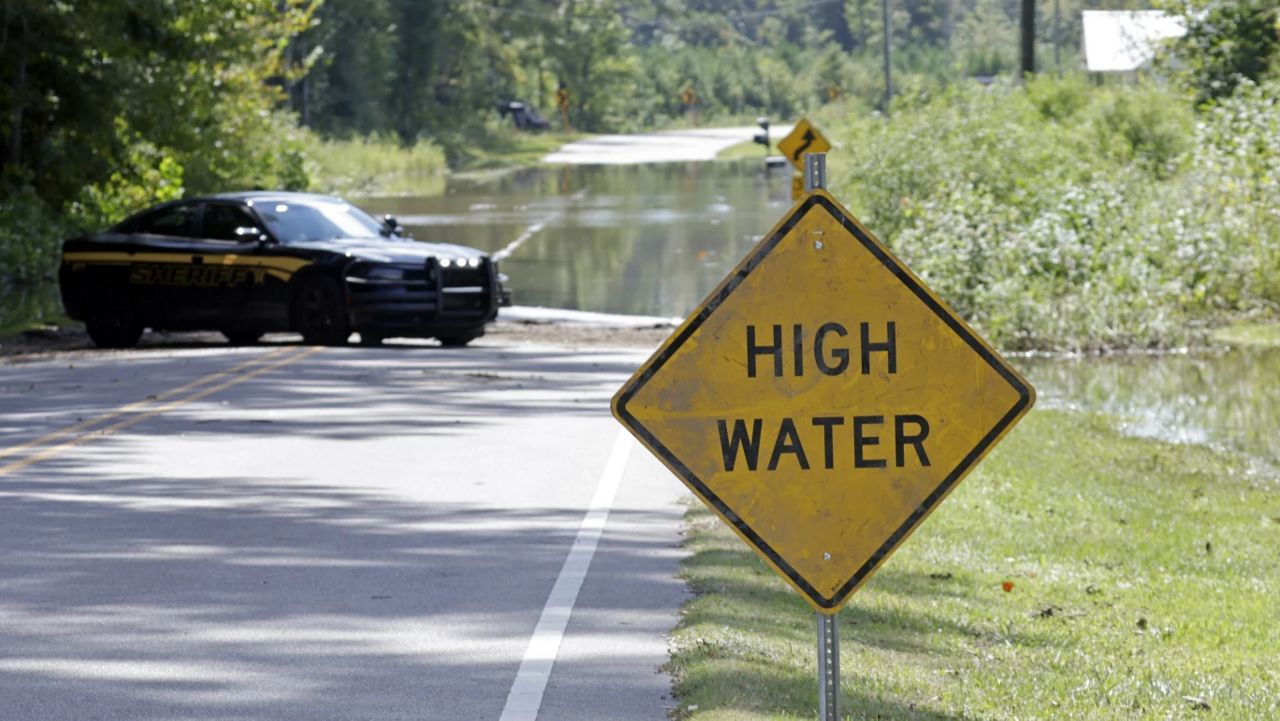A recent coastal storm system caused one death and many road closures in multiple counties after punching North Carolina's shore and dumping an unexpected amount of rain that led to flooding and numerous rescues.
Earlier this week, Gov. Roy Cooper announced North Carolina was in a state of emergency due to a “firehose” storm system that was centered in southeastern North Carolina, officials said. Cooper spoke at a press conference Wednesday in Brunswick County.
Brunswick and northern New Hanover counties were most impacted by the storm system. Surrounding counties were also affected.
Cooper was “sad to report one death of a [person whose] car went around a barricade and went into the water,” in Brunswick County. High waters made the road unsafe causing the Brunswick County Sheriff’s Office to block the road off with their cars, according to the State Highway Patrol.
Early Tuesday morning, on N.C. 211, a driver drove around vehicles. The floodwater's strong current pulled the car deeper into the water, said Freddy Johnson, a Highway Patrol commander. The car was submerged in 12 feet of floodwater. Soon thereafter, a water rescue team arrived and tried unsuccessfully to find the car.
Wednesday, first responders and the Brunswick County Sheriff’s Office Dive Team returned to the crash site, and they were able to find a blue Subaru Crosstrek. Richard Walton Robinson, 80, of Southport, N.C., was found dead in the driver seat, according to Johnson.
The North Carolina State of Emergency Response Team began monitoring the storm Friday and continued to do so through the weekend, according to Director William Ray. There was predicted to be 5 to 8 inches of rain, but some areas in Brunswick County received more than 20 inches, Cooper said, and “caused significant problems.”
The storm system caused 60 road closures in about 12 counties, and most of the closures are in Brunswick County, according to the governor. There are 22 damage sites in the county too.
Several locations will need extensive improvements, said N.C. Department of Transportation Secretary Joey Hopkins. Some areas are unreachable because of high water levels.
Many homes and highways were damaged by the storm. A “bridge got washed out … floodwater was in homes,” according to the governor. People were being rescued off the side of the road, out of their flooded homes and off rooftops, said David McIntyre, the deputy director of Emergency Management in Brunswick County.
This one-in-1,000-year flood shocked many people, according to The Associated Press. The damage from the flood caused many closures. However, the Highway Patrol, Emergency Management and local officials are actively accessing the damage and making repairs to areas that they can get to, Hopkins said.
Cooper warned people not to drive in floodwaters because it is unknown lurks underneath.
Officials in Brunswick County are focusing their efforts on opening the roads back up, Hopkins said. N.C. Highway 12 in Ocracoke, N.C. reopened Wednesday afternoon. The ferry from Ocracoke to Hatteras also resumed service, said the secretary.
Cooper and other officials express the importance of investing in building “resilient” infrastructure to combat future storms. Building higher bridges, elevating homes and creating buyouts that “soak up floodwater” are on the top of their lists.
McIntyre asks the public to stay aware of what is going on, listen to messaging provided by officials and use the resources given to them.



